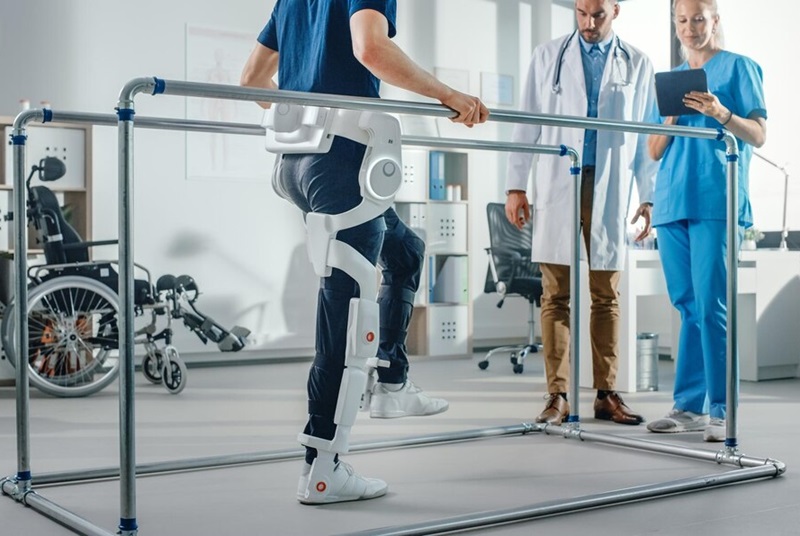Knee pain—whether caused by arthritis, injury, or wear and tear—can disrupt even the simplest of daily routines. For many, when medications and therapy no longer help, knee replacement surgery becomes the only viable solution. With surgical technology advancing rapidly—including procedures like hip replacement surgery in Mumbai—patients are now faced with a key question: Is robotic knee and hip replacement truly better than traditional surgery?
This isn’t just a matter of high-tech versus old-school—it’s about outcomes, recovery, and how the patient feels after surgery. While some may be familiar with robotic systems used in complex surgeries like hip replacement surgery in Mumbai, the idea of robots assisting in knee surgery may sound new or even intimidating. In this article, we break down the real differences between robotic and traditional knee replacement from a patient’s perspective—what matters in terms of comfort, function, safety, and results.
Understanding the Basics: Traditional vs. Robotic Knee Replacement
Traditional knee replacement involves the surgeon manually aligning the implant using surgical tools and their experience. While highly effective in the hands of a skilled surgeon, it relies heavily on visual assessment and anatomical landmarks during the operation.
Robotic knee replacement, on the other hand, uses advanced imaging technology to create a 3D model of the patient’s knee. This allows for a highly personalized surgical plan before the procedure even begins. During surgery, a robotic arm helps guide the surgeon’s instruments with greater accuracy, ensuring precise alignment and implant placement.
Personalization and Precision: Robotic Has the Edge
One of the biggest advantages of robotic surgery is precision. Every patient’s anatomy is unique. Robotic systems allow the surgeon to tailor the procedure based on the individual’s joint shape, bone quality, and movement patterns.
For a patient, this means:
- Less bone removal
- Smaller incisions
- Better implant fit
- Reduced post-surgery pain
- Improved joint function and natural movement
For example, patients who had previously undergone hip replacement surgery in Mumbai using robotic techniques often report quicker mobility and a more “natural” joint feel. Similar results are being seen with robotic knee replacements as well.
Recovery Time: Faster with Robotics?
Robotic surgery tends to be less invasive than traditional methods. Because of the better planning and precision, soft tissues and surrounding muscles are less disturbed. This often translates into:
- Less post-operative pain
- Shorter hospital stays
- Quicker rehabilitation
- Earlier return to daily activities
Patients managed by an experienced orthopedic doctor in Thane have shared that robotic-assisted procedures helped them get back on their feet faster and with less reliance on painkillers compared to friends or relatives who underwent conventional surgery.
That said, every recovery experience is individual, and success also depends on factors like age, fitness level, and commitment to physiotherapy.
Long-Term Outcomes: Durability and Implant Longevity
A properly aligned knee implant lasts longer. Misalignment, even by a few millimeters, can increase wear and reduce the lifespan of the prosthesis. Robotic systems minimize this risk by enhancing accuracy.
For younger patients or those with active lifestyles, this is particularly important. A better-fitted implant not only feels more stable but also reduces the likelihood of revision surgery in the future.
Traditional surgery can deliver excellent long-term outcomes, especially in skilled hands. However, robotic surgery brings an added layer of consistency and reproducibility that reduces room for error.
Risks and Limitations: Are There Any?
Both traditional and robotic knee replacement surgeries are considered safe. However, no procedure is completely risk-free. Common risks like infection, blood clots, or stiffness apply to both.
That said, robotic procedures involve more planning and time, and not all hospitals or surgeons may have access to the necessary technology or training. Also, robotic surgery may come with a higher cost upfront, depending on the hospital and equipment used.
If cost is a factor, it’s worth having a discussion with your orthopedic doctor in Thane or elsewhere to weigh the pros and cons in your specific case.
The Role of the Surgeon Remains Critical
It’s important to note that robotic systems assist but do not replace the surgeon. The expertise of the orthopedic surgeon remains the most critical factor in any joint replacement.
Choosing an experienced surgeon who understands your medical history, lifestyle, and expectations is key—regardless of the surgical method. Whether it’s a robotic knee or a traditional hip replacement surgery in Mumbai, success largely depends on the surgeon’s skill, patient care approach, and aftercare support.
Cost Considerations
The cost of robotic knee replacement is typically higher due to the equipment, training, and infrastructure required. Insurance coverage may vary depending on the provider and policy. While many patients find the additional investment worthwhile due to improved outcomes, others may opt for traditional surgery if budget is a concern.
It’s always best to consult with your orthopedic specialist about pricing, package options, and what’s included—like hospital stay, implant costs, and post-op therapy.
Conclusion: So, Is Robotic Knee Replacement Better?
From a patient-centric viewpoint, robotic knee replacement does offer significant advantages—greater accuracy, reduced pain, faster recovery and improved function. However, it may not be necessary for every case.
The final decision depends on individual needs, health status, budget, and the experience of the surgical team. The best approach is to have a transparent conversation with your orthopedic surgeon. Whether you’re exploring robotic options or a traditional joint replacement, what’s most important is a personalized plan that fits your body, lifestyle, and expectations.
FAQs
- Is robotic knee replacement painful?
Robotic surgery tends to be less painful post-operatively compared to traditional surgery due to reduced tissue damage and more precise incisions. - How long does it take to recover after robotic knee replacement?
Most patients start walking within a day or two. Full recovery may take around 6 to 12 weeks, depending on individual health and physiotherapy. - Is robotic knee surgery more expensive?
Yes, robotic surgery may be more costly due to the use of advanced technology, but it can offer better results and faster recovery in return. - Is robotic surgery better for older patients?
Robotic surgery can be beneficial for patients of all ages, especially those with complex joint issues or deformities. However, suitability should be assessed by a skilled orthopedic doctor. - Do I need to go to a special hospital for robotic surgery?
Yes, not all hospitals are equipped with robotic systems. It’s important to choose a center that offers the latest technology and has experienced orthopedic surgeons. - Can robotic surgery be used for other joints, like the hip?
Yes, robotic assistance is also used in hip replacement surgery in Mumbai and other cities. It offers similar advantages in terms of precision and recovery. - Should I always choose robotic over traditional surgery?
Not necessarily. Robotic surgery is ideal in many cases but may not be required for every patient. Your doctor will help you decide the most appropriate method based on your condition. You can also read about breaking common myths around robotic knee surgery to clear up any confusion before making your decision.










